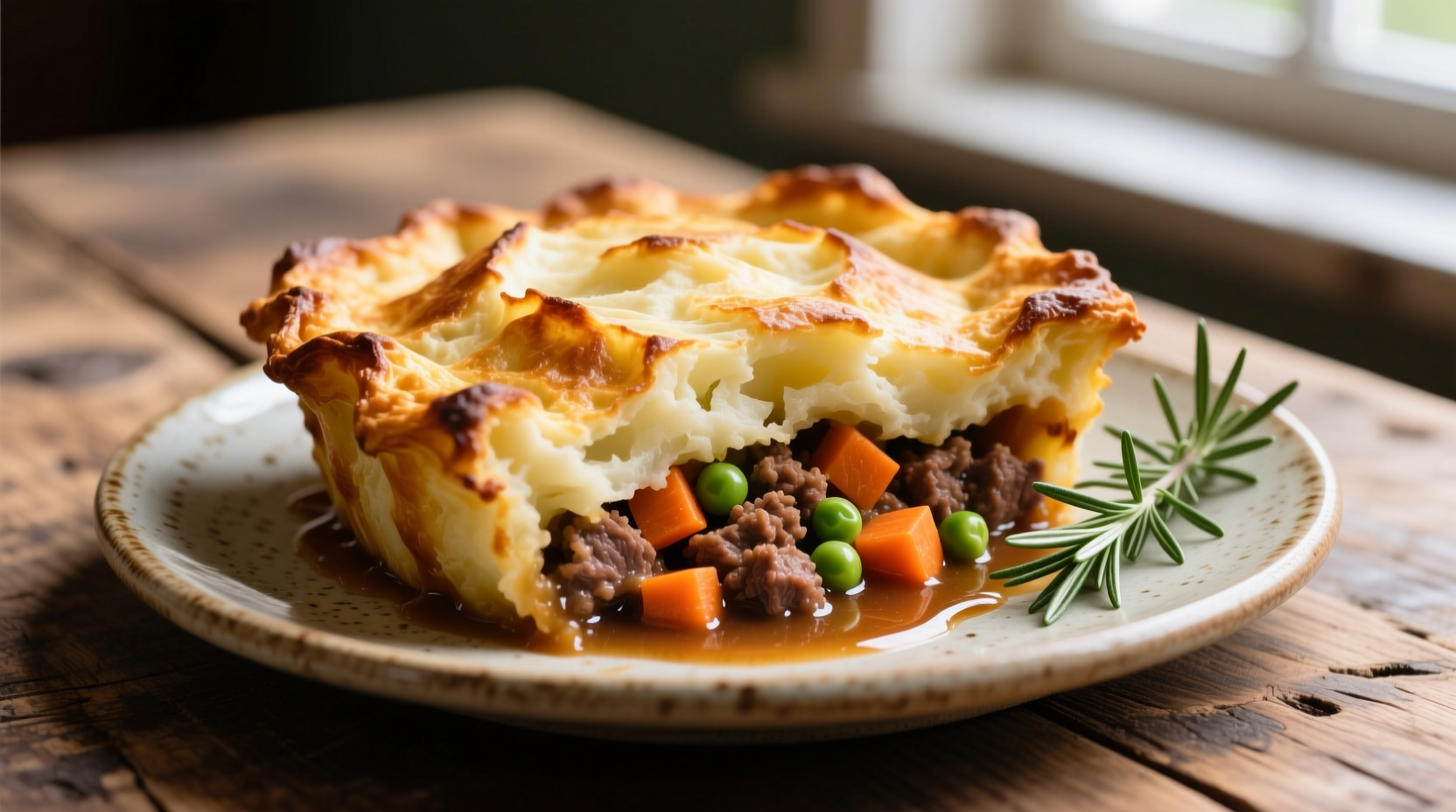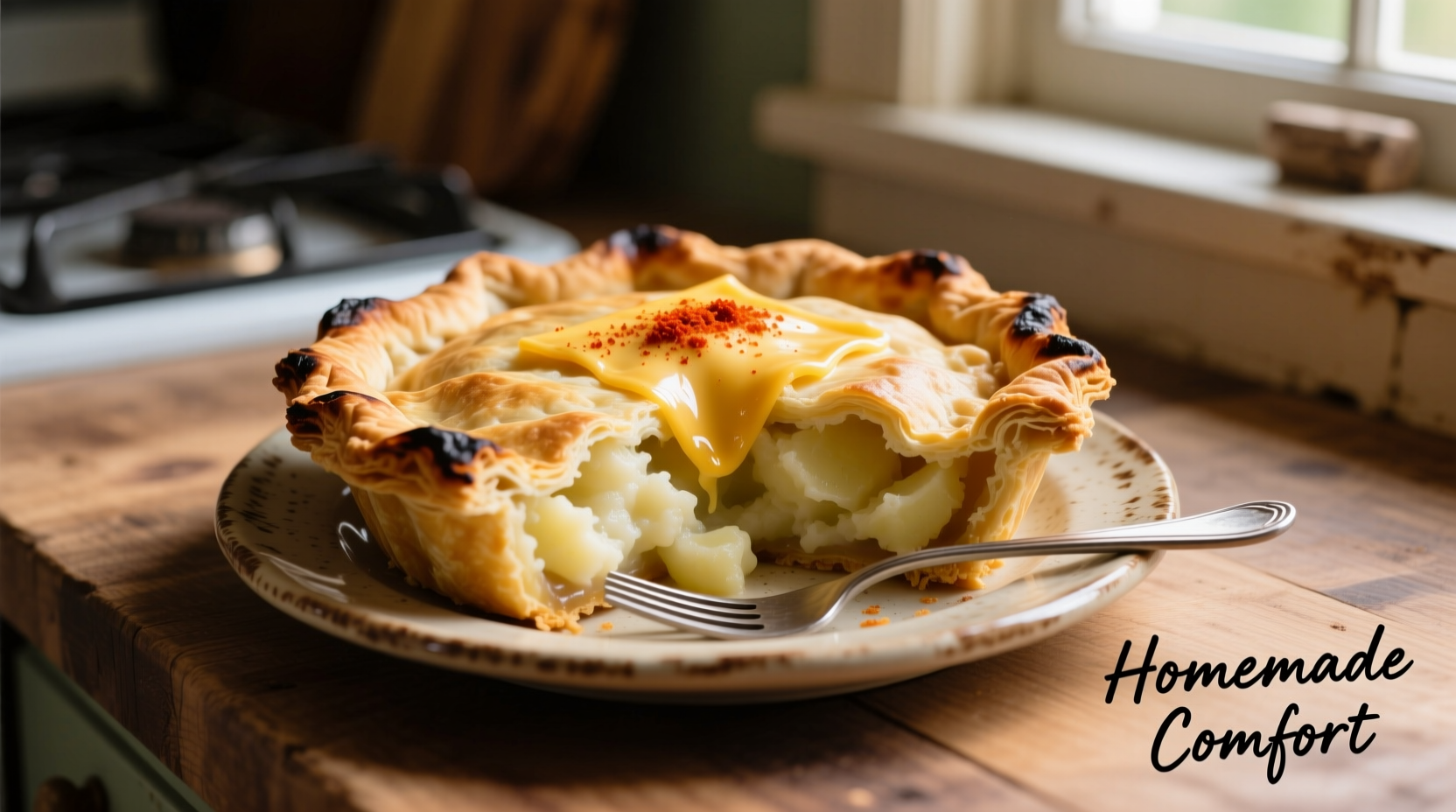Many home cooks searching for mashed potato pie recipes find themselves confused when results show shepherd's pie instead. This isn't a mistake—it's because mashed potato pie isn't a standard culinary term in professional cooking circles. What you're actually looking for is almost certainly shepherd's pie or one of its close relatives, where mashed potatoes serve as the golden-brown topping rather than the main filling.
Why Mashed Potato Pie Isn't What You Think
When you search for mashed potato pie, you're encountering a common culinary misunderstanding. Potatoes simply don't work well as a pie filling—they lack the structural integrity needed to hold pie shape and would become unpleasantly watery. Instead, mashed potatoes excel as a topping, creating that perfect crispy-yet-creamy contrast when baked.
| Dish Name | Primary Protein | h>Mashed Potato RoleOrigin | |
|---|---|---|---|
| Shepherd's Pie | Lamb | Top layer only | United Kingdom (1791) |
| Cottage Pie | Beef | Top layer only | United Kingdom (1791) |
| Pâté Chinois | Ground beef | Middle layer | Quebec, Canada |
| American Potato Pie | None (vegetable) | Filling component | Midwestern US |
This shepherd's pie vs cottage pie comparison reveals why "mashed potato pie" causes confusion—in traditional preparations, potatoes only form the top layer, never the pie structure itself. The exception is regional American variations where potatoes might appear in the filling, but these are specialty dishes rather than culinary standards.
The Evolution of Potato-Topped Comfort Food
Understanding the history of mashed potato pies requires tracing how potatoes became kitchen staples. When potatoes arrived in Europe from South America in the 16th century, they were initially viewed with suspicion. It took centuries for them to become culinary staples:
- 1585: Potatoes introduced to Europe from Peru
- 1791: First printed recipe for "shepherd's pie" appears in Family Cookery by Mrs. Rundell
- 1880s: Term "cottage pie" emerges to distinguish beef-based versions
- Early 1900s: American cookbooks document regional "potato pie" variations
- Post-WWII: Global spread through military rations and migration
According to food historian Sophie Dubois, "The confusion around mashed potato pie stems from regional adaptations. In some American Midwest communities, resourceful cooks created vegetable pies where mashed potatoes formed part of the filling, but these never gained widespread recognition like the British potato-topped casseroles."

When Potato Pies Work (and When They Don't)
Not all mashed potato pie attempts succeed. Understanding these context boundaries prevents kitchen disasters:
- Works well: Mashed potatoes as topping (shepherd's/cottage pie)
- Works with modifications: Potato layers in savory pies (like pâté chinois)
- Rarely works: Mashed potatoes as primary pie filling
- Always problematic: Using watery mashed potatoes in pie crusts
The USDA's Food Safety and Inspection Service confirms that potato moisture content creates structural challenges in pie applications. Their food handling guidelines note that high-moisture ingredients like standard mashed potatoes require careful management to prevent sogginess or food safety issues in baked goods.
Creating the Perfect Potato-Topped Pie: A Practical Guide
Follow these steps for the best mashed potato pie alternative (properly called shepherd's or cottage pie):
Perfect Mashed Potato Topping
- Use starchy potatoes like Russets (70% solids vs 20% water content)
- Boil until fork-tender but not waterlogged
- Add warm cream or milk gradually (cold creates gluey texture)
- Mix in egg yolk for better browning (1 per 2 lbs potatoes)
- Season with white pepper (black specks show through golden crust)
Filling Fundamentals
The ideal shepherd's pie filling ratio is 2:1 (filling to topping). For best results:
- Thicken meat juices with roux before adding
- Cool filling completely before topping
- Create texture contrast with vegetable chunks
- Leave 1/2 inch space below dish rim to prevent overflow
Avoiding Common Mashed Potato Pie Mistakes
Even experienced cooks make these potato pie preparation errors:
- The Soggy Bottom Syndrome: Adding warm filling to potato topping (always cool filling first)
- The Invisible Layer: Making topping too thin (minimum 3/4 inch thickness)
- The Flavor Imbalance: Over-seasoning one component (season in layers)
- The Structural Collapse: Using waxy potatoes like Yukon Golds in topping (they're better in fillings)
Professional chefs recommend testing your mashed potatoes' readiness by placing a dollop on parchment paper—if it holds shape without spreading, it has the right consistency for pie topping.
Serving and Storage Guidelines
For optimal enjoyment of your potato-topped pie creation:
- Rest 15 minutes after baking for cleaner slices
- Pair with crisp green salad to balance richness
- Store leftovers in airtight container for up to 3 days
- Reheat at 350°F until internal temperature reaches 165°F
- Freeze portions for up to 3 months (thaw before reheating)
The National Center for Home Food Preservation confirms that properly cooled and stored shepherd's pie maintains quality for 3-4 days refrigerated. Their research shows that the dairy content in mashed potatoes makes proper cooling essential for food safety.
Regional Twists Worth Trying
While traditional mashed potato pie recipes don't exist, these regional variations might inspire your next comfort food creation:
- Irish Boxty Pie: Potato pancake layers with stew filling
- Quebec Pâté Chinois: Layered with corn and ground beef
- American Midwest Potato Pie: Vegetable pie with potato filling
- Welsh Rarebit Pie: Cheese sauce with potato topping
These adaptations demonstrate how culinary traditions evolve while maintaining the comforting essence of potato-based dishes.











 浙公网安备
33010002000092号
浙公网安备
33010002000092号 浙B2-20120091-4
浙B2-20120091-4